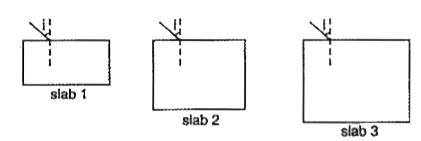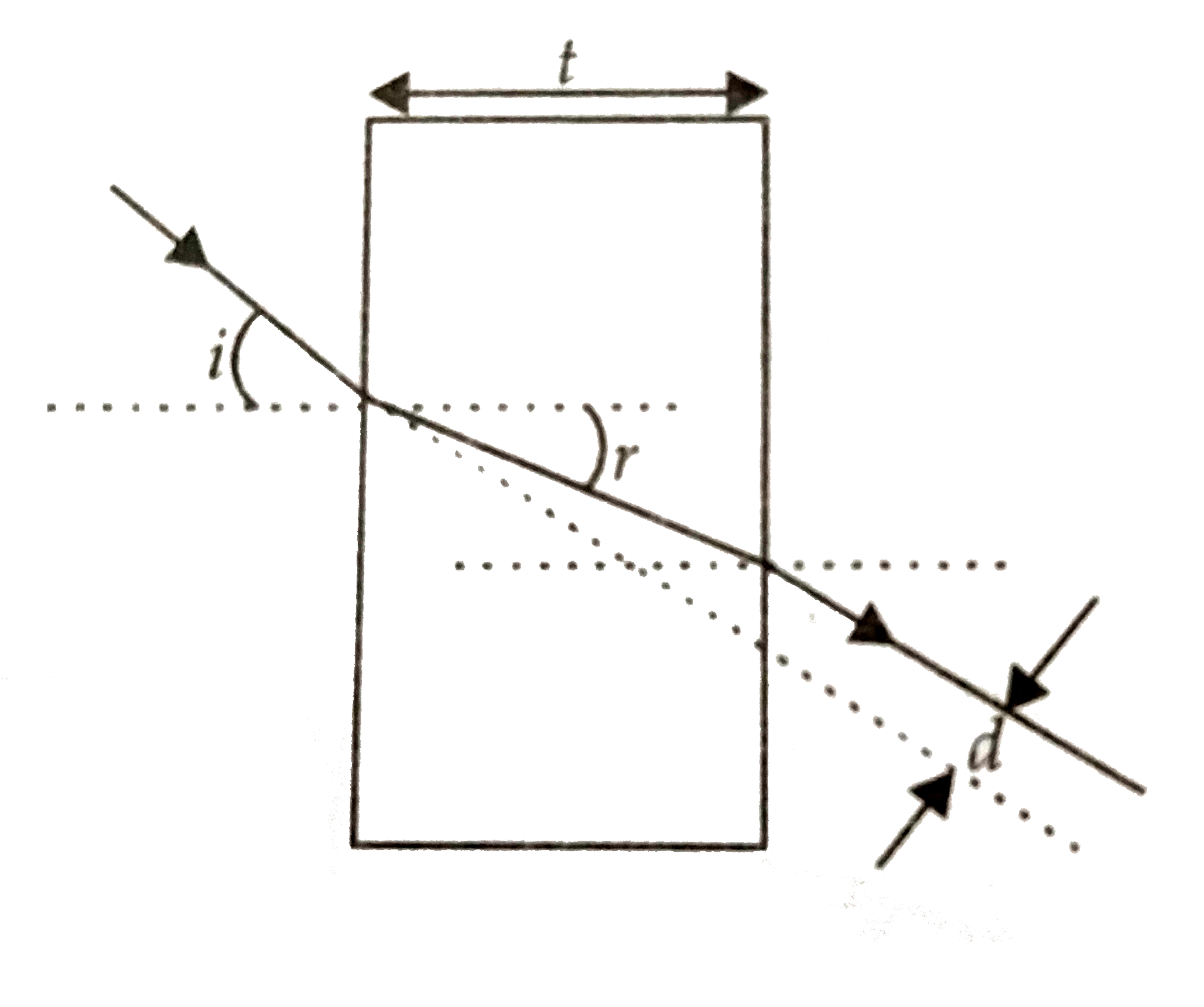A ray of light strikes a glass slab of thickness t. It emergens on the opposite face, parallel to the incident ray but laterally displaced. The lateral displacement, Δx is
Δx=0
Δx = t sin ( I - r) cos r
Δx=t sin Icos r
Δx= t sin ( I - r)cos r
The correct Answer is:D
Step by step video, text & image solution for A ray of light strikes a glass slab of thickness t. It emergens on the opposite face, parallel to the incident ray but laterally displaced. The lateral displacement, Delta x is by Physics experts to help you in doubts & scoring excellent marks in Class 12 exams.
Updated on:21/07/2023Topper's Solved these Questions
- WAVE THEORY OF LIGHT BOOK - TARGET PUBLICATIONCHAPTER - WAVE THEORY OF LIGHT EXERCISE - COMPETITIVE THINKING
63 Videos
- WAVE THEORY OF LIGHT BOOK - TARGET PUBLICATIONCHAPTER - WAVE THEORY OF LIGHT EXERCISE - EVALUATION TEST
20 Videos
- WAVE THEORY OF LIGHT BOOK - TARGET PUBLICATIONCHAPTER - WAVE THEORY OF LIGHT EXERCISE - EVALUATION TEST
20 Videos
- WAVE MOTION BOOK - TARGET PUBLICATIONCHAPTER - WAVE MOTION EXERCISE - MCQ 7.1
61 Videos
Similar Questions
A ray of light falls on three glass slabs of the same material at the same angle of incidence. In which case, is the lateral displacement of the emergent ray of light (a) maximum
(b) Minimum

View SolutionA single ray traverses a glass plate (thickness = t) with plane surfaces that are parallel to each other. The emergent ray is parallel to the incident ray but suffers a lateral displacement d. Assuming that glass plate (refractive index μ) is placed in air, find the dependence of d on angle of incidence i. Plot the variation of d with i (changing from 0° to 90°)
View Solution
Knowledge Check
A ray of light strikes a glass slab (R.l. = μ) of finite thickness t. The emerging light is
Aparallel to. the incident rayBperpendicular to the incident rayCrotates by an angle[sin−1(1μ)]Dtotally internally reflectedA rays of light is incident on a thick slab of glass of thickness t as shown in figure. The emergent ray is parallel to the incident ray but displaced sideways by a distance d. If the angles are small then d is
 At(1+ir)Brt(1−ir)Cit(1−ri)Dt(1+ri)
At(1+ir)Brt(1−ir)Cit(1−ri)Dt(1+ri)A ray of light is incident on a parallel slab of thickness t and refractive index n. If the angle of incidence θ is small, than the lateral displacement in the incident and emergent ray will be
Atθ(n−1)nBtθnCtθnn−1Dtθ(n+1)n
A light ray passes from air to denser medium of certain thickness and emerges on the other side. If emergent ray is parallel to the incident ray, the distance travelly by the ray of light in the denser medium is 6 cm, and the angle of incidence and refraction are 60∘and30∘ , respectively, find the lateral displacement of the light ray.
View SolutionA ray of light is incident on a glass slab of thickness t, at an angle i,r is the angle of refraction in the glass slab. Distance travelled in the glass slab is
View SolutionA ray of light passes throught a plane glass slab of thickness t and refractive index μ=1.5. The angle between incident ray and emergent ray will be
View SolutionLight passes through a glass slab with parallel sides and thickness t. If i and r the angles of incidence of refraction, the lateral displacement is
View SolutionA ray of light strikes a glass slab at an angle of 50∘ with the normal to the surface of the slab. What is the angle of incidence?
View Solution
